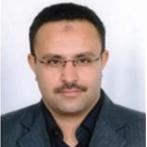International Journal of Wireless and Microwave Technologies (IJWMT)
IJWMT Vol. 13, No. 5, 8 Oct. 2023
Cover page and Table of Contents: PDF (size: 1245KB)
Design of 28/38-GHz Dual-Band Millimeter Wave Antenna based on SIW for Future Cellular Communication Systems
Full Text (PDF, 1245KB), PP.34-47
Views: 0 Downloads: 0
Author(s)
Index Terms
mmWave, radiation pattern, return loss, and gain
Abstract
The millimeter wave (mmWave) band has gained significant attention due to its potential to cater to the rapidly increasing wireless data rates. Due to the reduced wavelength in mmWave communications, it is possible to implement large antenna arrays at both the transmitter and the receiver. Designing small antennas in the mmWave range presents many challenges, which is the main aim of this paper. The aim of this work is to proposed an efficient design of a dual-band mmWave antenna, with the dimension of 26.5mm×7.0mm×0.254mm, for future cellular communication systems using a substrate integrated waveguide (SIW). The elements of the proposed antenna consist of SIW cavity with one longer longitudinal slot and another shorter engraved slot in one of the conducting planes (1×2) for 28 GHz and 38 GHz, respectively. The substrate duroid 5880/Rogers are used with a loss tangent and dielectric constant of 0.003 and 2.2, respectively. The CST Microwave Studio, an industry-standard software, was utilized to conduct the simulation results. The proposed antenna's performance was evaluated by analyzing its gain, radiation pattern, and return loss at the frequencies of 28 GHz and 38 GHz. Furthermore, it is compared with other relative works. The single antenna element was able to attain an impedance bandwidth (S11< -10 dB) of 1.32 GHz and 3.1 GHz, with a satisfactory gain of 6.1 dBi and 5.81 dBi at 28 GHz and 38 GHz, respectively. The results indicate that the designed antenna can attain consistent and adjustable dual-frequency performance, making it a viable option for future cellular communication systems.
Cite This Paper
Khaled A. M. Al Soufy, Nagi H. Al-Ashwal, Faisal S. Al-Kamali, Redhwan Saad, Majed A. AL-Sayadi, "Design of 28/38-GHz Dual-Band Millimeter Wave Antenna based on SIW for Future Cellular Communication Systems", International Journal of Wireless and Microwave Technologies(IJWMT), Vol.13, No.5, pp. 34-47, 2023. DOI:10.5815/ijwmt.2023.05.04
Reference
[1]Access, E. U. T. R. Base station (bs) radio transmission and reception, 3gpp ts 36.104. V14 3 (2009).
[2]Commission, F. C. et al. Spectrum frontiers report and order and further notice of proposed rulemaking: Fcc16-89 (2016).
[3]K. Wu, "Integration and interconnect techniques of planar and non-planar structures for microwave and millimeter-wave circuits -current status and future trend," APMC 2001. 2001 Asia-Pacific Microwave Conference (Cat. No.01TH8577), Taipei, Taiwan, 2001, pp. 411-416 vol.2, doi: 10.1109/APMC.2001.985398.
[4]K. Wu, Y. J. Cheng, T. Djerafi and W. Hong, "Substrate-Integrated Millimeter-Wave and Terahertz Antenna Technology," in Proceedings of the IEEE, vol. 100, no. 7, pp. 2219-2232, July 2012, doi: 10.1109/JPROC.2012.2190252.
[5]K. Wu, M. Bozzi and N. J. G. Fonseca, "Substrate Integrated Transmission Lines: Review and Applications," in IEEE Journal of Microwaves, vol. 1, no. 1, pp. 345-363, Jan. 2021, doi: 10.1109/JMW.2020.3034379.
[6]A. Dahiya and D. Deshwal, “Design Fundamentals: Iris Waveguide Filters Versus Substrate Integrated Waveguide (SIW) Bandpass Filters,” in Proceedings of International Conference on Artificial Intelligence and Applications, Singapore: Springer Singapore, 2021, pp. 195–202. https://doi.org/10.1007/978-981-15-4992-2_19
[7]A. Dahiya, R. Anand, N. Sindhwani, and D. Deshwal, “Design and construction of a low loss substrate integrated waveguide (SIW) for S band and C band applications,” Mapan, vol. 36, no. 2, pp. 355–363, 2021. https://doi.org/10.1007/s12647-021-00449-x
[8]T. Deckmyn, M. Cauwe, D. Vande Ginste, H. Rogier and S. Agneessens, "Dual-Band (28,38) GHz Coupled Quarter-Mode Substrate-Integrated Waveguide Antenna Array for Next-Generation Wireless Systems," in IEEE Transactions on Antennas and Propagation, vol. 67, no. 4, pp. 2405-2412, April 2019, doi: 10.1109/TAP.2019.2894325.
[9]N. Al-Fadhali, H. A. Majid, R. Omar, M. K. A. Rahim, S. M. Shah and B. A. F. Esmail, "Wideband (22-30GHz) mm-Wave Substrate Integrated Waveguide (SIW) Antenna for 5G Applications," 2019 IEEE Conference on Antenna Measurements & Applications (CAMA), Kuta, Bali, Indonesia, 2019, pp. 1-4, doi: 10.1109/CAMA47423.2019.8959544.
[10]P. Kumawat and S. Joshi, "Review of Slotted SIW antenna at 28 GHz and 38 GHz for mm-wave applications," 2020 12th International Conference on Computational Intelligence and Communication Networks (CICN), Bhimtal, India, 2020, pp. 8-13, doi: 10.1109/CICN49253.2020.9242587.
[11]M. A. Matin, “Review on millimeter wave antennas- potential candidate for 5G enabled applications,” Adv. Electromagn., vol. 5, no. 3, p. 98, 2016.
[12]G. A. Casula, G. Mazzarella, G. Montisci, and G. Muntoni, “A review on improved design techniques for high performance planar waveguide slot arrays,” Electronics (Basel), vol. 10, no. 11, p. 1311, 2021, https://doi.org/10.3390/electronics10111311
[13]P. Kumawat and S. Joshi, “5G dual-band slotted SIW array antenna,” J. Taibah Univ. SCI, vol. 15, no. 1, pp. 321–328, 2021. https://doi.org/10.1080/16583655.2021.1978830
[14]N. Ashraf, O. Haraz, M. A. Ashraf and S. Alshebeili, "28/38-GHz dual-band millimeter wave SIW array antenna with EBG structures for 5G applications," 2015 International Conference on Information and Communication Technology Research (ICTRC), Abu Dhabi, United Arab Emirates, 2015, pp. 5-8, doi: 10.1109/ICTRC.2015.7156407.
[15]W. Y. Yong, A. Haddadi, T. Emanuelsson and A. A. Glazunov, "A Bandwidth-Enhanced Cavity-Backed Slot Array Antenna for mmWave Fixed-Beam Applications," in IEEE Antennas and Wireless Propagation Letters, vol. 19, no. 11, pp. 1924-1928, Nov. 2020, doi: 10.1109/LAWP.2020.3022988.
[16]H. -N. Hu, F. -P. Lai and Y. -S. Chen, "Dual-Band Dual-Polarized Scalable Antenna Subarray for Compact Millimeter-Wave 5G Base Stations," in IEEE Access, vol. 8, pp. 129180-129192, 2020, doi: 10.1109/ACCESS.2020.3009431.
[17]R. Y. Mianroodi, H. Aliakbarian and G. A. E. Vandenbosch, "Dual-port dual-band (28/38 GHz) SIW leaky wave antenna for 5G base stations," 12th European Conference on Antennas and Propagation (EuCAP 2018), London, UK, 2018, pp. 1-4, doi: 10.1049/cp.2018.1212.
[18]J. Singh, F. Lal Lohar, and B. S. Sohi, “Design of dual band millimeter wave antenna using SIW material for 5G cellular network applications,” Mater. Today, vol. 45, pp. 5405–5409, 2021. https://doi.org/10.1016/j.matpr.2021.02.106
[19]Djerafi, T., Doghri, A., Wu, K.. Substrate Integrated Waveguide Antennas. In: Chen, Z. (eds) Handbook of Antenna Technologies. Springer, Singapore, 2015. https://doi.org/10.1007/978-981-4560-75-7_57-1
[20]krn: “CST Studio Suite 3D EM simulation and analysis software,” https://www.3ds.com/products-services/simulia/products/cst-studio-suite/?utm_source=cst.com&utm_medium=301&utm_campaign=cst, accessed May 2022.
[21]F. Alnemr, M. F. Ahmed, and A. A. Shaalan, “A compact 28/38 GHz MIMO circularly polarized antenna for 5 G applications,” J. Infrared Millim. Terahertz Waves, vol. 42, no. 3, pp. 338–355, 2021. https://doi.org/10.1007/s10762-021-00770-1
[22]H. Ullah, F. A. Tahir and Z. Ahmad, "A Dual-band Hexagon Monopole Antenna for 28 and 38 GHz Millimeter-Wave Communications," 2018 IEEE International Symposium on Antennas and Propagation & USNC/URSI National Radio Science Meeting, Boston, MA, USA, 2018, pp. 1215-1216, doi: 10.1109/APUSNCURSINRSM.2018.8608274.
[23]Marzouk, H.M., Ahmed, M.I., Shaalan, A.-E.H.: “Novel dual-band 28/38 GHz Mimo antennas for 5g mobile applications” Progress In Electromagnetics Research. C Pier C., 2019, 93, pp. 103–117. doi:10.2528/PIERC19032303
[24]P. Kumawat and S. Joshi, “Design of 28/38 GHz Dual-Band SIW Slot antenna for 5G Applications,” Int. J. Eng. Res. Technol. (Ahmedabad), vol. 8, no. 17, 2020. DOI : 10.17577/IJERTCONV8IS17005
[25]S. Muhammad, I. Ya’u, A. S. Abubakar, and A. S. Yaro, “Design of single feed dual-band millimeter wave antenna for future 5G wireless applications,” Sci. World J., vol. 14, no. 1, pp. 84–87, 2019.
[26]Muhammad Anab Muhammad Irfan Khattak Syed Muhammad Owais Abbas Ali Khattak Asif Sultan, "Design and Analysis of Millimeter Wave Dielectric Resonator Antenna for 5G Wireless Communication Systems," Progress In Electromagnetics Research C, Vol. 98, 239-255, 2020. doi:10.2528/PIERC19102404.
[27]M. N. Hasan, S. Bashir, and S. Chu, “Dual band omnidirectional millimeter wave antenna for 5G communications,” J. Electromagn. Waves Appl., vol. 33, no. 12, pp. 1581–1590, 2019. https://doi.org/10.1080/09205071.2019.1617790
[28]A. E. Farahat and K. F. A. Hussein, "Dual-Band (28/38 GHz) Wideband MIMO Antenna for 5G Mobile Applications," in IEEE Access, vol. 10, pp. 32213-32223, 2022, doi: 10.1109/ACCESS.2022.3160724.
[29]Umair Rafique, Shobit Agarwal, Nasir Nauman, Hisham Khaliland Khalil Ullah , "Inset-Fed Planar Antenna Array for Dual-Band 5G MIMO Applications," Progress In Electromagnetics Research C, Vol. 112, 83-98, 2021. doi:10.2528/PIERC21021302




